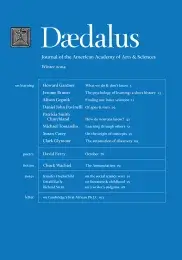The psychology of learning: a short history
Learning remains an elusive topic, despite the endless research lavished on it. And what we mean by it, of course, is shaped by how we choose to study it. Concentrate on how children master their native language and you arrive at a very different conception of learning than had you researched how undergraduates memorize nonsense syllables. Does learning to finger a Bach cello sonata tap the same learning processes as learning to trace your way through a finger maze? Is all learning alike, reducible to a common set of principles?
Two learning tasks are said to be alike if mastering one makes mastering the other easier–the so-called transfer criterion. But what is transferred? Is it responses? Rules? Or do we simply learn how to learn, as when with enough practice we become exam-wise or taxform-wise? How do we learn the lay of the land? How do we learn to concentrate our attention?
And then there are questions about differences in how learning occurs. Do all species learn in the same way and do the bright and the dull go about it in like manner? And what about external inducements, rewards, and punishments? Are all learning situations comparable?
I used to give the star performers of the experiments I’d just completed to my young daughter. These rats seemed to develop a more open curiosity under her magnanimous care. What, indeed, does domestication do to an animal’s approach to learning? Were those insights achieved by Wolfgang Koehler’s pampered chimpanzees–their figuring out how to rake in an out-of-reach banana by putting two sticks together, for instance–simply the result of the leisurely tutelage they received on that German island of Tenerife?1 It used to be said, only half jokingly, that Yale stimulus-response-reinforcement learning theory was different from more cognitive California theory because Clark Hull in New Haven taught his graduate students that rats “should get on with . . .
